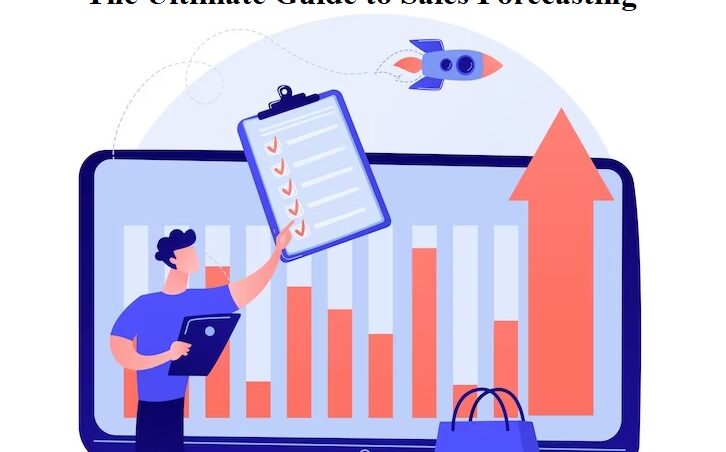
Introduction – Sales Forecasting
Implementing effective sales forecasting methods is crucial for driving business growth and success. In this comprehensive guide, we will explore the concept of sales forecasting, provide real-life examples, and present various methods that can help you make accurate predictions about your future sales performance. By leveraging the power of data analysis and strategic planning, you can gain valuable insights into your market, optimize resource allocation, and make informed decisions to stay ahead of your competitors.
What is Sales Forecasting?
Sales forecasting is the process of estimating future sales volumes and revenue based on historical data, market trends, and other relevant factors. It involves analyzing past performance, assessing current market conditions, and projecting future outcomes to determine the potential demand for your products or services. A well-executed sales forecasting strategy enables businesses to anticipate customer demand, set realistic sales goals, allocate resources effectively, and develop proactive marketing and sales strategies.
The Importance of Sales Forecasting
Accurate sales forecasting offers numerous benefits to businesses of all sizes and industries. Here are some key reasons why you should prioritize sales forecasting as an integral part of your business strategy:
1. Resource Planning and Allocation
Sales forecasting allows you to align your resources, such as inventory, production capacity, and staffing, with the anticipated demand. By accurately predicting sales volumes, you can avoid overstocking or understocking inventory, optimize your supply chain, and ensure that you have the right level of resources to meet customer demand efficiently.
2. Budgeting and Financial Management
A well-planned sales forecast enables you to create realistic budgets, allocate funds effectively, and manage your financial resources efficiently. By projecting future sales revenue, you can estimate your cash flow, plan investments, and make informed financial decisions that contribute to the overall financial health of your organization.
3. Performance Evaluation and Goal Setting
Sales forecasting provides a benchmark against which you can evaluate your actual sales performance. By comparing your forecasted figures with the actual results, you can identify performance gaps, adjust your strategies, and set more accurate goals for your sales team. This process enables you to track progress, measure success, and continuously improve your sales efforts.
Examples of Sales Forecasting
To help you understand the practical application of sales forecasting, let’s explore a few real-life examples:
Example 1: Seasonal Sales Forecasting
A retail clothing store analyzes its historical sales data to identify patterns and trends in customer behavior. Based on this analysis, the store predicts increased sales during the holiday season and plans its inventory accordingly. By aligning their stock levels with the anticipated surge in demand, the store maximizes sales opportunities and minimizes the risk of stockouts or excess inventory.
Example 2: New Product Launch Forecasting
A technology company is preparing to launch a new smartphone model. To estimate the potential market demand, the company conducts market research, analyzes competitor sales data, and surveys target customers. By combining these insights with their historical sales performance, the company generates a sales forecast that guides their production, marketing, and distribution strategies for the new product.
Example 3: Sales Territory Forecasting
A global pharmaceutical company operates in multiple regions and wants to allocate sales targets to its regional sales teams. By considering factors such as population demographics, market saturation, and historical sales data, the company develops a sales forecast for each territory. This approach ensures that sales targets are both challenging and realistic, empowering the sales teams to focus their efforts effectively.
Methods of Sales Forecasting
Now that we’ve discussed the importance of sales forecasting and explored some practical examples, let’s delve into the various methods you can utilize to forecast your sales accurately:
1. Historical Sales Analysis
Analyzing your historical sales data is a fundamental method for sales forecasting. By identifying patterns, trends, and seasonality in your past performance, you can extrapolate future sales figures. This method works best when your business operates in a stable market environment and when historical data is readily available.
2. Market Research and Analysis
Market research involves gathering data on industry trends, customer preferences, and competitor behavior. By conducting surveys, interviews, and focus groups, you can gain valuable insights into your target market and identify potential demand drivers. This information, when combined with historical sales data, allows you to develop a more accurate sales forecast.
3. Leading Indicators
Leading indicators are economic or industry-specific metrics that precede changes in sales trends. Examples include housing starts, consumer confidence indexes, and stock market performance. By monitoring leading indicators relevant to your industry, you can anticipate shifts in customer demand and adjust your sales forecast accordingly.
4. Regression Analysis
Regression analysis is a statistical method that examines the relationship between variables. By analyzing historical sales data and identifying key factors that influence sales, such as pricing, marketing campaigns, or seasonality, you can build a regression model. This model can then be used to predict future sales based on changes in the influencing variables.
5. Time-Series Forecasting
Time-series forecasting involves analyzing data points collected over a specific time period to identify patterns and make predictions. By applying techniques such as moving averages, exponential smoothing, or autoregressive integrated moving average (ARIMA) models, you can forecast future sales based on historical patterns.
Conclusion
Sales forecasting is an invaluable tool for businesses seeking to optimize their operations, drive growth, and gain a competitive edge. By understanding the concept of sales forecasting, exploring real-life examples, and adopting various forecasting methods, you can make informed decisions, set realistic goals, and effectively manage your sales performance. Remember, accurate sales forecasting requires a combination of data analysis, market knowledge, and strategic planning. So, embrace the power of forecasting and propel your business toward success!
LIKE WHAT YOU’RE READING?
CHECK OUT SOME OF OUR OTHER GREAT CONTENT HERE:
- EFFECTIVE METHODS OF SALES PROMOTION TO WIN MORE CUSTOMERS
- 7 IMPORTANT STEPS IN A SALES PROCESS
- MARKETING MANAGER ROLES AND RESPONSIBILITIES
- UNDERSTANDING DIGITAL MARKETING
- WHAT IS AFFILIATE MARKETING? (HOW TO GET STARTED)
- PERFORMANCE MARKETING – A BEGINNER’S GUIDE
- EFFECTIVE BRANDING METHODS
- UNDERSTANDING CONSUMER BEHAVIOR
- HOW AI IS USED IN DIGITAL MARKETING?
- 5 BEST SOCIAL MEDIA PLATFORMS FOR BUSINESS IN 2022
- WHAT IS THE DEFINITION OF ECOMMERCE
- ROLE OF SOCIAL MEDIA IN MARKETING
- WHAT IS ZERO-BASED BUDGETING




1 Comment